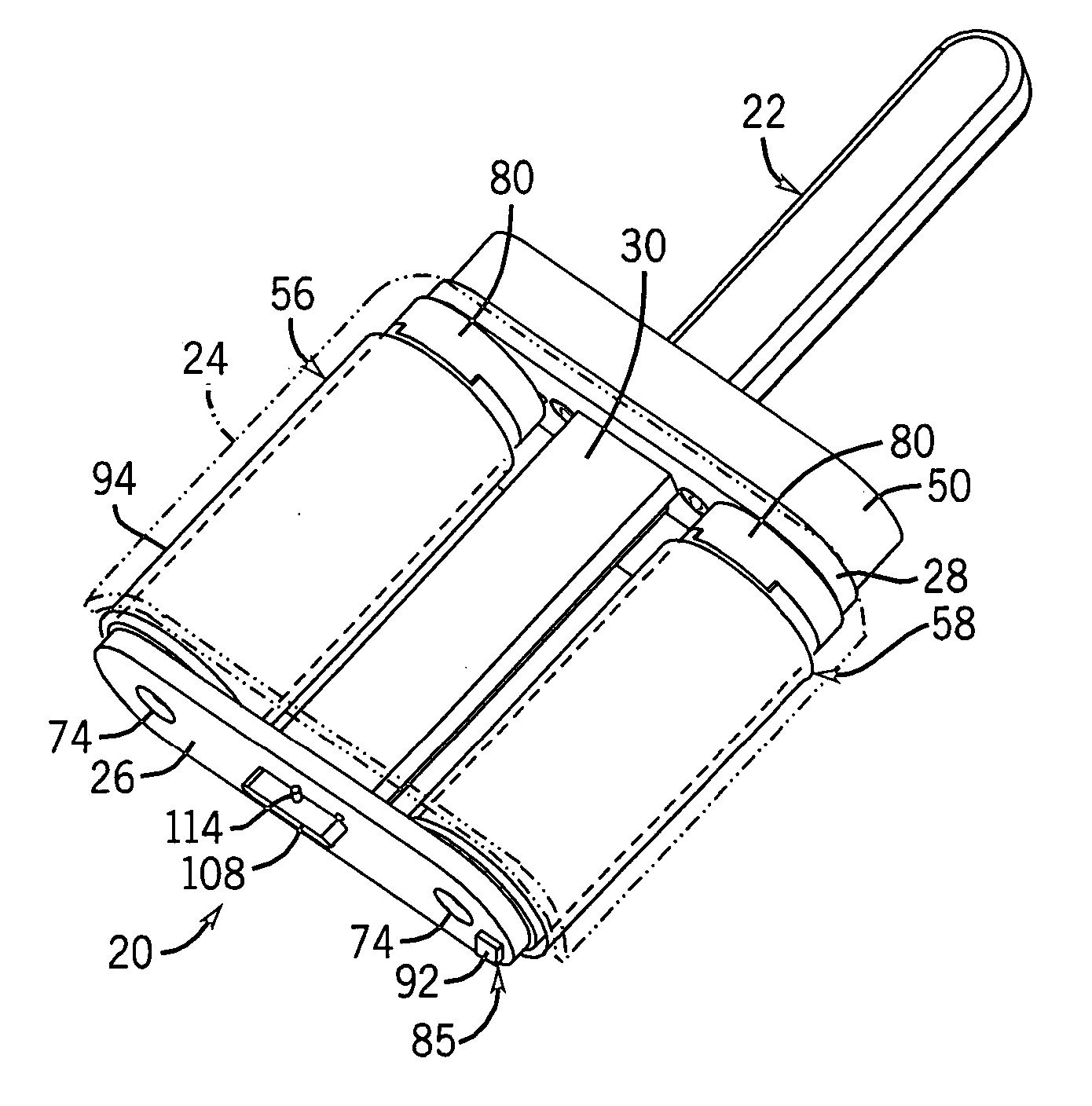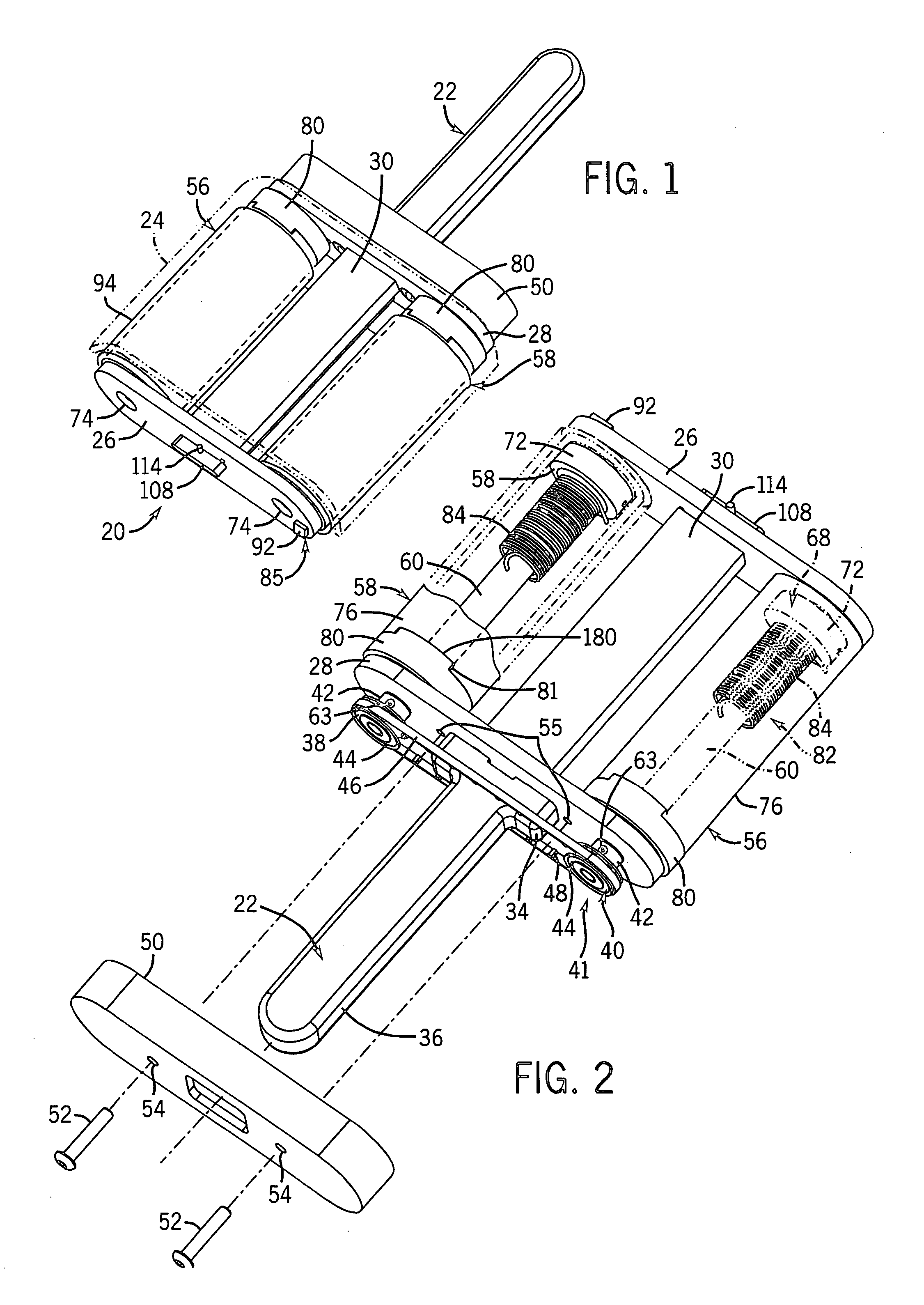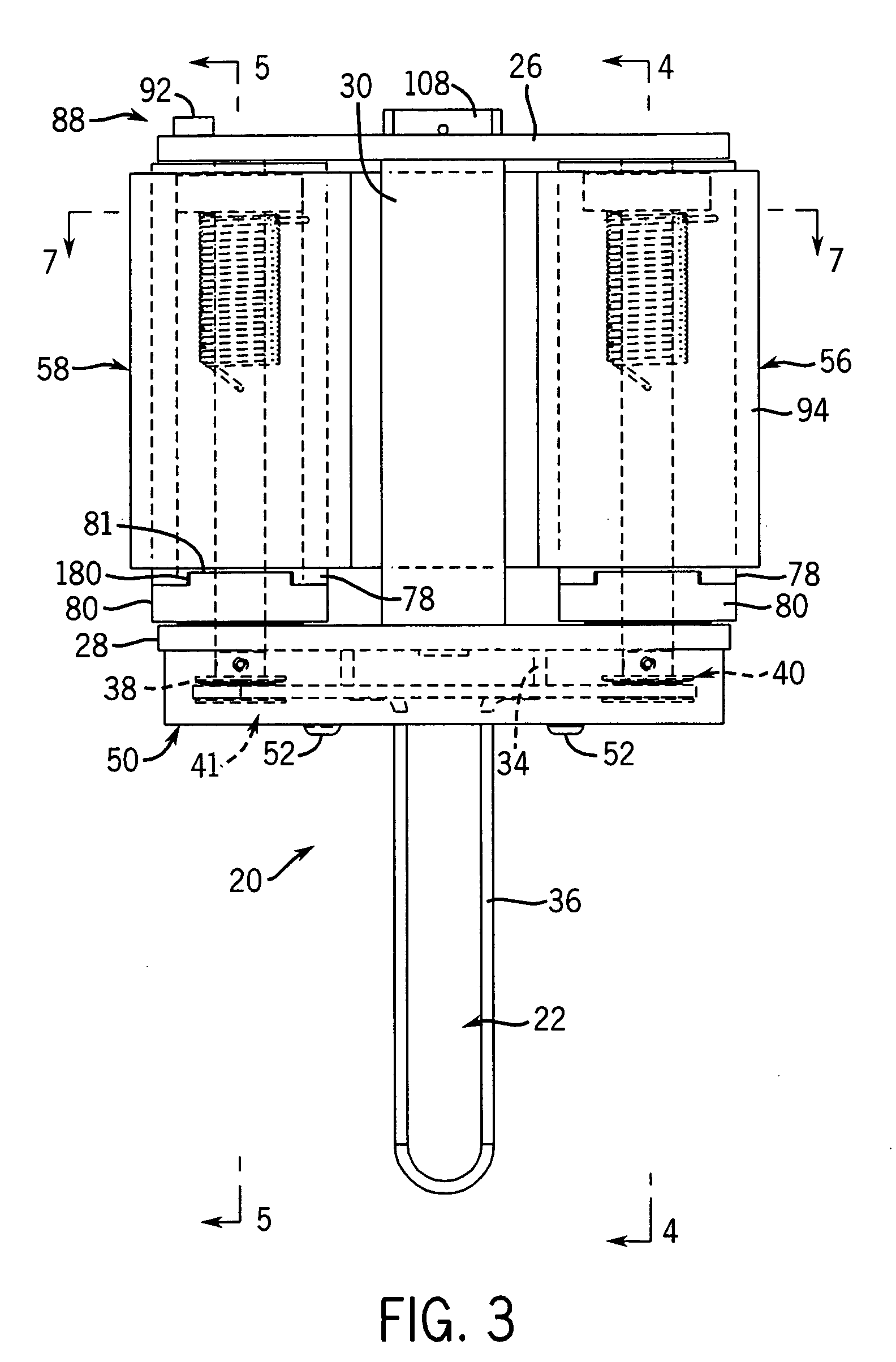Continuous adhesive roller
a technology of adhesive rollers and rollers, which is applied in the direction of vehicle maintenance, vehicle cleaning, cleaning equipment, etc., can solve the problems of lint, dust and other debris that cannot be used continuously over a surface, the device cannot be utilized to make multiple passes or swipes over a surface, and the number of uses of the roller is limited
- Summary
- Abstract
- Description
- Claims
- Application Information
AI Technical Summary
Benefits of technology
Problems solved by technology
Method used
Image
Examples
fourth embodiment
[0069] Referring now to FIGS. 11-15, a fourth embodiment for the device 200 includes a housing 202 having an upper surface 204 and a pair of downwardly extending side panels 206 and 208. The housing 202 also includes a handle 205 that is positioned on the upper surface 204 between the side walls 206, 208 to extend generally parallel to the side walls 206, 208. The handle 205 can have any desired shape or configuration, e.g., the handle can also be oriented perpendicular to the walls 206, 208, but in this embodiment takes the form of a generally U-shaped bar connected to the surface 204 at opposite ends and defining a space 207 between the handle 205 and the surface 204.
[0070] Within the housing 202, a roller mechanism 209 is disposed which includes a pair of plates 210, 212, which are generally triangular in shape but which can have any shape desired or required, that are releasably secured to and extend parallel to the side walls 206 and 208. One plate 210 includes a synchronizatio...
fifth embodiment
[0072] Referring now to FIGS. 16-22, a fifth embodiment for the device 200 is illustrated in which only a single idler roller 214 is rotatably positioned between the supply roller 56 and the take-up roller 58. The take-up roller 58 is also moved forwardly within the housing 202 towards the supply roller 58 in order to provide a generally planar contact surface section for the web 94 between the idler roller 214 and the take-up roller 58. The plates 210, 212 are also shown to have multiple bores 220 in which the take-up roller 58 and idler rollers 214, 216 can be mounted to form the various embodiments for the device 200, as well as a pair of mounting openings 222, used to releasably secure the plates 210, 212 within the housing 202. A pair of supports 224, 226 is also shown extending between the plates 210, 212 to provide stability to and ensure proper connection between the rollers 56, 58, 214 and the plates 210, 212.
[0073] A sixth embodiment for the device 200 is illustrated in FI...
PUM
 Login to View More
Login to View More Abstract
Description
Claims
Application Information
 Login to View More
Login to View More - R&D
- Intellectual Property
- Life Sciences
- Materials
- Tech Scout
- Unparalleled Data Quality
- Higher Quality Content
- 60% Fewer Hallucinations
Browse by: Latest US Patents, China's latest patents, Technical Efficacy Thesaurus, Application Domain, Technology Topic, Popular Technical Reports.
© 2025 PatSnap. All rights reserved.Legal|Privacy policy|Modern Slavery Act Transparency Statement|Sitemap|About US| Contact US: help@patsnap.com



